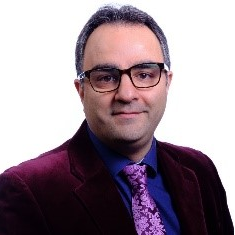Biomaterials for Soft and Hard Tissue Engineering
A special issue of Journal of Functional Biomaterials (ISSN 2079-4983). This special issue belongs to the section "Biomaterials for Tissue Engineering and Regenerative Medicine".
Deadline for manuscript submissions: closed (10 July 2024) | Viewed by 45518
Special Issue Editors
Interests: artificial intelligence; medical diagnostics; medical electronics
Special Issues, Collections and Topics in MDPI journals
Interests: biomaterials design; processing; testing and development; cell and tissue engineering; electrospinning
Special Issues, Collections and Topics in MDPI journals
Interests: biology; stem cells; biomaterials design; biological testing; regenerative medicine; cell and tissue engineering
Special Issue Information
Dear Colleagues,
This Special Issue focuses on biomaterials for soft and hard tissue engineering. This Special Issue provides an opportunity to submit comprehensive reviews and research articles on recent advancements in the application and use of various scaffolds and biomaterials in tissue engineering. Manuscripts will focus on both soft and hard tissues/organs, the materials used for treatment and repair, natural composite scaffolds, synthetic biomaterials, fabrication techniques, innovative materials and approaches for scaffold preparation, host response to the scaffolds, challenges and future perspectives. Bringing all the information together in one major reference, authors will systematically review and summarize recent research findings, thus providing an in-depth understanding of the scaffolds used in different body parts.
Dr. Mansour Youseffi
Dr. Farshid Sefat
Dr. Morvarid Saeinasab
Guest Editors
Manuscript Submission Information
Manuscripts should be submitted online at www.mdpi.com by registering and logging in to this website. Once you are registered, click here to go to the submission form. Manuscripts can be submitted until the deadline. All submissions that pass pre-check are peer-reviewed. Accepted papers will be published continuously in the journal (as soon as accepted) and will be listed together on the special issue website. Research articles, review articles as well as short communications are invited. For planned papers, a title and short abstract (about 250 words) can be sent to the Editorial Office for assessment.
Submitted manuscripts should not have been published previously, nor be under consideration for publication elsewhere (except conference proceedings papers). All manuscripts are thoroughly refereed through a single-blind peer-review process. A guide for authors and other relevant information for submission of manuscripts is available on the Instructions for Authors page. Journal of Functional Biomaterials is an international peer-reviewed open access monthly journal published by MDPI.
Please visit the Instructions for Authors page before submitting a manuscript. The Article Processing Charge (APC) for publication in this open access journal is 2700 CHF (Swiss Francs). Submitted papers should be well formatted and use good English. Authors may use MDPI's English editing service prior to publication or during author revisions.
Keywords
- biomaterials
- hard tissue
- soft tissue
- regenerative medicine
- scaffold
- synthetic
- natural biomaterials
- biocomposites
Benefits of Publishing in a Special Issue
- Ease of navigation: Grouping papers by topic helps scholars navigate broad scope journals more efficiently.
- Greater discoverability: Special Issues support the reach and impact of scientific research. Articles in Special Issues are more discoverable and cited more frequently.
- Expansion of research network: Special Issues facilitate connections among authors, fostering scientific collaborations.
- External promotion: Articles in Special Issues are often promoted through the journal's social media, increasing their visibility.
- Reprint: MDPI Books provides the opportunity to republish successful Special Issues in book format, both online and in print.
Further information on MDPI's Special Issue policies can be found here.








